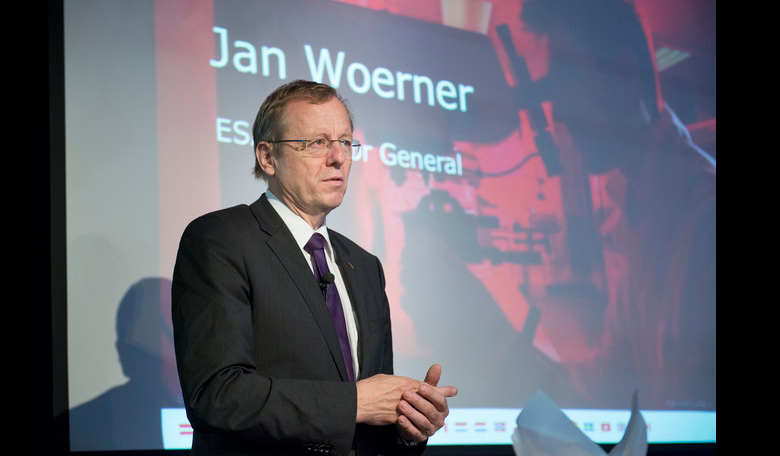Yesterday, with the help of Director General Jan Woerner, ESA opened the Advanced Manufacturing Laboratory aimed at understanding the capabilities of 3D printing and other advanced manufacturing techniques for future space missions.
Based along side other world-leading facilities at the Science and Technology Facilities Council’s Rutherford Appleton Laboratory (RAL) in Harwell, Oxfordshire and directly adjacent to ESA’s UK facility, this latest technical laboratory will assess novel composite materials and production techniques and 3D printing technologies for applications in space.
“There’s a multitude of emerging technologies with apparent potential for producing stronger, lighter and cheaper spacecraft structures, but we have to be sure they are fully suitable for space with no show-stoppers,” explains Andrew Barnes, overseeing the new laboratory. “Our laboratory aims to assess candidate materials and manufacturing processes for space missions, pre-screening them early in their development cycle.”
The ESA–RAL Advanced Manufacturing Laboratory complements ESA’s network of existing laboratories across Europe, and will support, amongst other things, ESA’s new Advanced Manufacturing cross-cutting initiative. This initiative aims to identify emerging manufacturing technologies which will open up new industrial possibilities in respect to streamlined production stages, design freedom and reduced cost.
Chris Bee, the Head of Business Development at the UK’s Science and Technology Facilities Council, said, “This is exactly the sort of collaboration that brings the whole Harwell Campus community together at its best. The laboratory is already driving projects in exciting new areas and though our focus is on components for space, we hope that the laboratory’s impact on the campus can extend well beyond.”
The Harwell campus already has an established scientific presence and includes facilities such as semiconductor cleanrooms, the UK’s Central Laser Facility, the ISIS neutron source, cryogenic laboratories and the Diamond Light Source, all of which can be utilised by the new lab.
“We’ve already been using STFC’s ISIS pulsed spallation neutron source to investigate the structural integrity of friction stir welded titanium for use in spacecraft propellant tanks. ISIS allows residual stress measurements to be performed in the bulk material using neutron diffraction,” said laboratory research fellow Sarah Baker.
The laboratories other key focus is 3D printing which, in this instance, will concentrate on building up parts layer by layer with powder or wire feedstock that is melted using a laser or electron beam source. 3D printed parts are slowly making an impact within spacecraft engineering and if the recent JUNO mission is anything to go by – it was the first spacecraft to incorporate 3D printed waveguide brackets made from titanium (https://room.eu.com/news/success-for-juno) – their usage is only likely to increase. It is therefore no surprise that ESA’s new laboratory will delve into this technology further by assessing the effects of 3D printing techniques upon the quality of manufactured parts.











